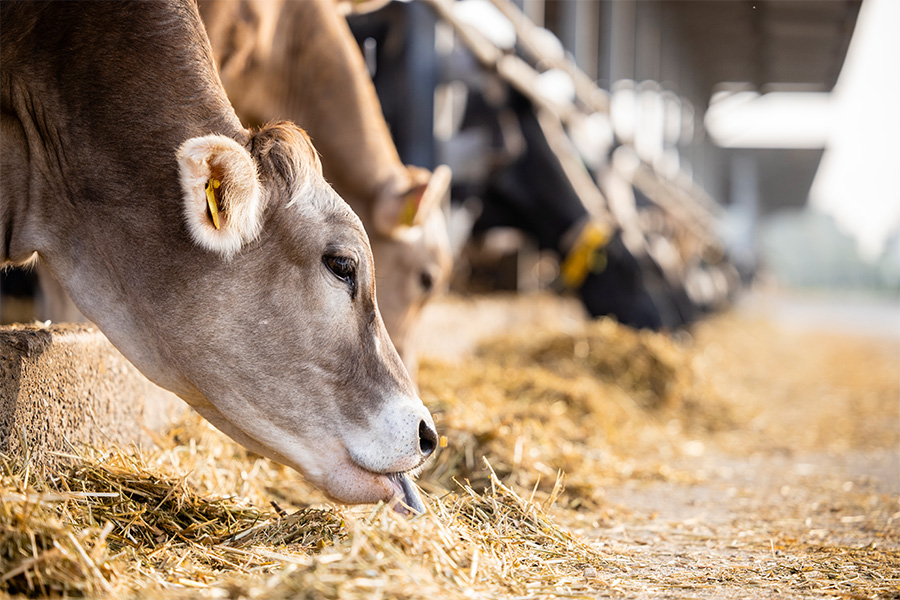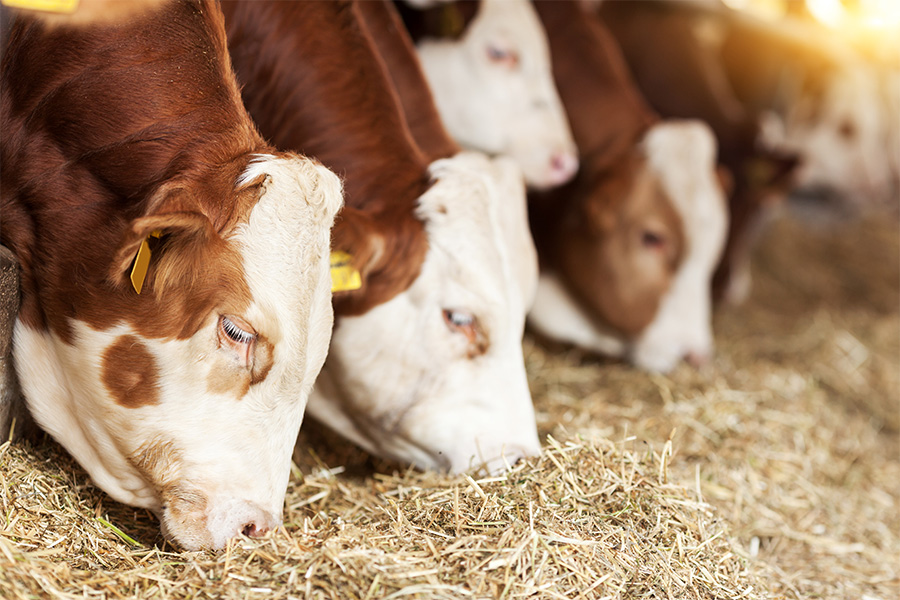Beef
-

Body condition scoring (BCS) is an easy and economical way to evaluate the body fat percentage of a cow. Cows can then be sorted and fed according to nutritional needs. Body condition scoring can be an effective tool for cattle producers who cannot weigh cattle, and it may be an even better measurement of cow condition and reproductive performance than weight. Most studies show that body condition decreases at a faster rate than weight loss. Therefore, body condition scoring can estimate the probability of re-breeding.
Tim Wilson, Jacob R. Segers, and Johnny Rossi
|
-

Clean water for cattle is important for animal health and production and water delivery systems require routine maintenance and monitoring.
Raymond Fitzpatrick, Martin Wunderly, Shanna Reynolds, Robyn Stewart, and Pedro Fontes
|
-

Autumn and winter are busy seasons for beef cattle producers, and many times grazing and cattle management are not as tightly regulated as in other times of the year. Many Southeastern cattle operations include pastureland that encompasses or borders oak timbers; most North American oak trees are considered toxic. Therefore, when cattle venture into timber land in search of grazing, there is an increased chance that acorns will be consumed and toxicosis may occur. The purpose of this bulletin is to educate producers on the symptoms and prevention of acorn toxicosis in beef cattle.
Jacob R. Segers and Lawton Stewart
|
-

Cotton byproducts offer a variety of feed ingredients that can lower the cost of beef cattle production. Cottonseed meal and whole cottonseed can be used in rations for any class of cattle. Gin trash and cottonseed hulls are low-energy feedstuffs that are used as a roughage source in high energy diets or as a partial energy replacement in mature cow diets. Cotton stalk residue can maintain a dry pregnant cow and will provide enough grazing for approximately 1 month if left standing or for three weeks if mowed prior to grazing. A reduction in fertility should not be a concern when recommended feeding rates are followed.
Lawton Stewart and Johnny Rossi
|
-

Pregnancy diagnosis is an important part of reproductive management in productive beef cow-calf operations. Open cows decrease profitability as they utilize similar resources as pregnant cows without producing a marketable calf to justify these costs. With the move toward more efficient operations and inclusion of artificial insemination (AI) and other reproductive technologies in cattle production, abstaining from pregnancy diagnosis may no longer be economically viable or practical. Establishing a pregnancy diagnosis program allows for the detection of cows that are not pregnant and allows producers to make management decisions to increase reproductive efficiency, such as culling of infertile females or resynchronizing females that are open. Although the economic benefits of incorporating pregnancy diagnosis are clear, the rate of adoption by beef cow-calf operations is considerably low in the United States. This article provides an overview of the different methods available (rectal palpation, transrectal ultrasound, and blood tests) for pregnancy diagnosis and provides a practical description of how to implement these methods.
Tammy W. Cheely, Savannah Tanner, and Pedro Fontes
|
-

With the growth of the ethanol industry in recent history, the availability of distillers grains, a byproduct of ethanol production, has increased. Distillers grains can serve as an excellent source of nutrients for beef cattle. However, several considerations must be taken into consideration before utilizing this resource. These include economics, nutrient content and potentially deleterious effects when fed improperly. This publication will provide guidelines and examples of how to use this feed resource.
Lawton Stewart
|
-

B 1302
Implanting Beef Cattle
Implanting nursing calves with a growth stimulant is one of the most economically justifiable practices available in the beef industry. Implants have been shown to increase weaning weights of nursing calves in hundreds of research trials. Stocker and feedlot calves exhibit even greater responses than nursing calves. Implanting returns more revenue per dollar invested than any other management practice.
Lawton Stewart
|
-

B 1315
Creep Feeding Beef Calves
Creep feeding is the practice of providing supplemental feed (grain or forage) to nursing calves. This is usually done with the use of a creep gate, which is large enough for calves to enter the feeding area but too small to allow cows to pass. Creep feeding systems vary from grain-based energy supplements to limit-fed protein supplements to creep grazing. Each system generally produces increased growth, which may or may not be profitable. Creep feeding, like any other supplementation practice, must be analyzed based on estimates of expected increases in performance and income compared to the costs of these improvements. This publication discusses the advantages and disadvantages of creep feeding.
Lawton Stewart
|
-

This resource provides detailed information for cattle owners/managers on mineral supplements for beef cattle to ensure their optimal growth and reproduction.
Lawton Stewart
|